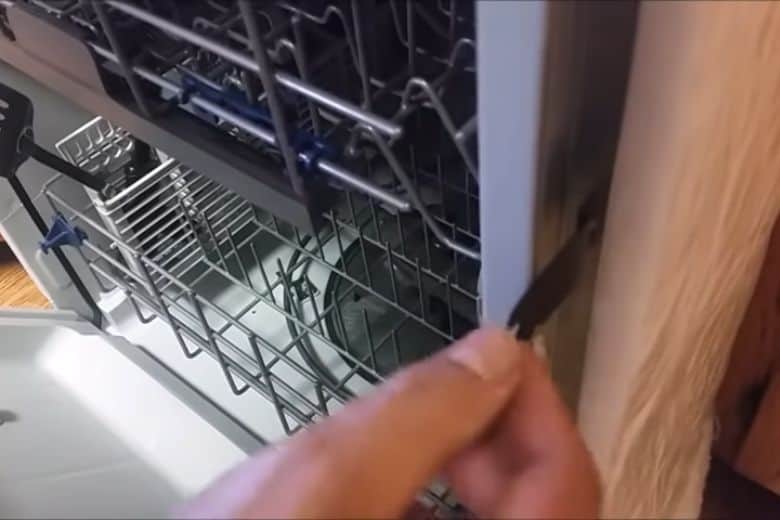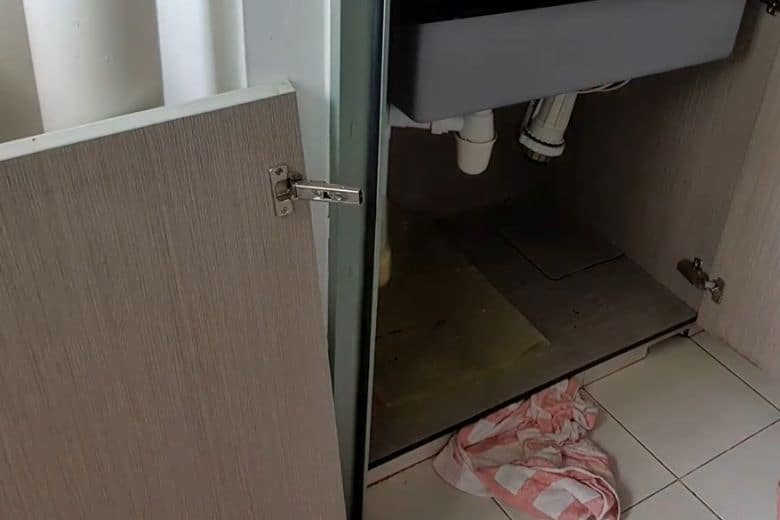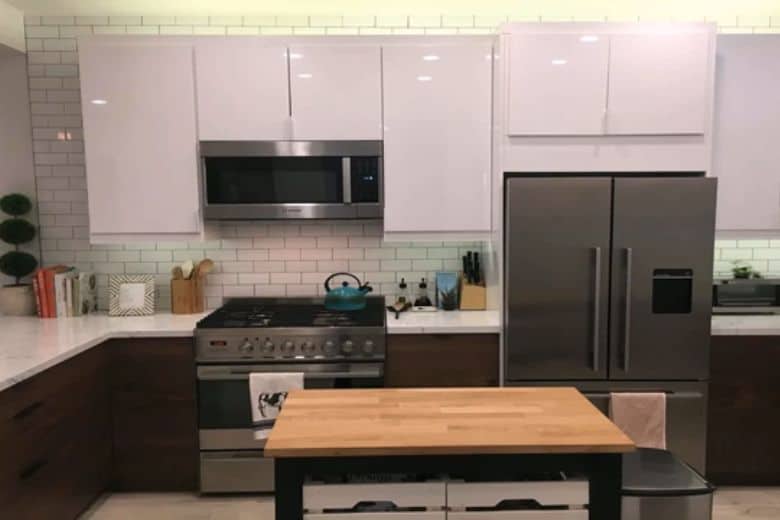Welcome to our comprehensive “Gap Between Dishwasher and Countertop” guide. If you ever notice the mysterious little gap between the dishwasher and countertop. You properly wonder and surely want to know the reason for this gap.
Consequently, the three common questions must come to your mind:
- Should there be a gap between the dishwasher and countertop?
- How much gap between dishwasher and countertop is normal!
- How to fill gap between dishwasher and cabinet?
Eventually, we are here to solve the mystery. Whether you are a homeowner, a kitchen designer, or only curious about the topic. This guide will explore the reasons behind the gap and provide solutions and knowledge regarding the affair.
Without further talk, let’s get into the topic.
Gap Between Dishwasher and Countertop: Explained
The space between a dishwasher and a countertop is called a gap. Generally, it exists between the dishwasher’s top and the countertop’s underside. However, it is uncommon to find such kind of gap. The gap size can vary depending on the dishwasher model and the installation process. However, some consider it a minor cosmetic issue.
Despite this fact, you should not ignore it. Because this gap causes water leakage, food debris accumulation, and even damage to the dishwasher or countertop.
So, to be safe from unwanted damage, you must know how much gap is normal. Let’s find out in the following section.
Should There be a Gap Between the Dishwasher and Countertop?
In general, it is recommended to have a small gap between the dishwasher and the countertop. This gap allows for proper ventilation and prevents potential heat transfer or moisture buildup damage. It also allows for easier installation, maintenance, and dishwasher removal if needed.
The recommended gap between the dishwasher and countertop typically ranges from 1/8 to 1/4 inch (3 to 6 mm). The recommendation can vary depending on the manufacturer’s instructions. Besides, the local building codes also matter in this manner.
So, it’s always a good idea to consult the dishwasher’s manual. Moreover, you can also Seek professional advice for accurate measurements in your specific situation.
Common Causes of the Gap Between Dishwasher and Countertop
Although the small gap is recommended to maintain a healthy kitchen atmosphere. But when the gap is beyond the general recommendation, you must find the reason. Understanding the causes of the gap helps you to find the appropriate solutions.
Let’s explore some of the common causes:
1. Installation Errors
Improper dishwasher installation can cause a visible gap between the dishwasher and the countertop. Generally, it occurs if the dishwasher is not correctly leveled. Additionally, inaccurate measurements during installation can cause issues.
2. Uneven Countertop Surface
An uneven countertop surface can also create a gap. If the countertop is not completely flat or if there are gaps or inconsistencies in its structure. Therefore, it can affect the seamless integration of the dishwasher and lead to an unsightly space.
3. Dishwasher Model and Design
Dishwasher models and designs vary in their dimensions and installation requirements. Some dishwashers are designed to have a flush fit with the countertop. In contrast, others may leave a deliberate gap for a few purposes.
So, considering the dishwasher design and installation system is fundamental to avoid noticeable gaps.
4. Shifting or Settling the Countertop
Over time, the countertop may shift or settle due to various factors. It could be due to changes in temperature, moisture levels, or the natural movement of the building’s structure. This movement can create a gap between the dishwasher and the countertop.
5. Aging or Warping of Materials
Materials used to construct the dishwasher or countertop may age or warp over time. Consequently, it can lead to misalignment and gap formation.
Impact of the Gap on Kitchen Hygiene
Along with understanding the reason gap, you should be aware of its awful impact if left unattended. Here are some common problems associated with the gap:
- Hygiene Concerns: The presence of food debris, liquids, and other substances in the gap provides a breeding ground for bacteria. It is therefore creating an unsanitary environment.
- Pest Infestation: The gap is an entry point for insects and rodents attracted by food particles. It can lead to an unwanted infestation in your kitchen.
- Water Damage: If gap is an entry point for insects and rodents attracted by food particles. It can lead to an unwanted infestation in your kitchen.
- Aesthetics: Gaps can disrupt the visual appeal of a well-designed kitchen, creating an unsightly and unfinished appearance.
How to Fill gap Between Dishwasher and Cabinet
You already know the reason for the gap and the impact of a big gap. Now let’s see a few solutions to this problem. Scroll down and find out which method suits your situation.
Method 1: Adjusting the Dishwasher Height
One possible solution is to adjust the height of the dishwasher. By raising or lowering the appliance, you can more accurately align it with the countertop. This adjustment can be made using adjustable legs or modifying the dishwasher’s position within the cabinetry.
Method 2: Installing a Filler Strip
Another effective way to close the gap is by installing a filler strip. This strip is made from a complementary material to your countertop. It will bridge the space and create a seamless transition. Customizable filler strips are available in various sizes and finishes. It will ensure a perfect match to your kitchen’s aesthetics.
Method 3: Installing a Custom Panel
Installing a custom panel can be a viable option for homeowners seeking a more integrated look. Custom panels are designed to match the cabinetry or countertop material. It is creating a seamless blend between the dishwasher and the surrounding kitchen elements. This solution not only eliminates the visible gap. But also adds a touch of sophistication and customization to your kitchen design.
Method 4: Using Silicone or Caulk
Applying a silicone sealant or caulk is an affordable and practical method to eliminate the gap. Sealing the edges prevents any water or food debris from getting trapped. Besides, it reduces the risk of mold or damage to your cabinetry. Ensure you use a high-quality, waterproof sealant suitable for kitchen applications.
Method 5: Using Gap Fillers
Gap fillers are specialized products that bridge the space between the dishwasher and the countertop. These flexible filters can be easily installed to close the gap, preventing food debris, water, and pests from entering the aperture.
Method 6: Installing a New Countertop
Replacing the countertop may be necessary in cases where the gap is significant, or the countertop has aged and warped. A new countertop can be custom-fitted to ensure a seamless alignment with the dishwasher, eliminating the gap.
When to ask for Professional Assistance
Addressing the gap between a dishwasher and a countertop may require professional expertise. Moreover, if you need clarification on the proper installation, alignment, or sealing techniques. It is advisable to consult a professional dishwasher installer or kitchen designer.
They can provide guidance specific to your kitchen setup. Therefore, it can ensure seamless integration between the dishwasher and countertop.
Frequently Asked Questions:
Can I install a new countertop myself to address the gap?
Answer: Installing a new countertop requires specific skills and tools. It’s better to hire a professional installer. Because they can ensure proper alignment with the dishwasher and minimize the gap.
How long does it take to fix the gap between the dishwasher and the countertop?
Answer: The time required to fix the gap depends on various factors—for example, the severity of the gap and the chosen solution. Adjusting the dishwasher height or using gap fillers can be relatively quick. On the other hand, installing a new countertop may take more time. Because it requires customization.
Can I use any filler material to bridge the gap?
Answer: Use suitable filler materials, such as silicone caulk, foam strips, or specifically designed gap caps. These materials are designed to provide a proper seal. Besides being more effective in bridging the gap between the dishwasher and countertop.
Is it possible to install a dishwasher without any gaps?
Answer: Some dishwashers are designed to have a flush fit with the countertop. Despite this, it is challenging to achieve a completely gap-free installation. It is impossible due to ventilation requirements, power cord placement, and design considerations. However, if you follow proper installation techniques, you can minimize the visibility and impact of the gap.
Conclusion
The gap between dishwasher and countertop is a common issue. It can affect the functionality and aesthetics of your kitchen. Although the small gap is recommended, you must be aware of the big gap. Finally, remember to seek professional assistance when needed. And stay proactive in maintaining your kitchen’s integrity.
All for today. Best of luck!
Paul Newman is a blogger who writes about plumbing and home improvement. Over the past 20 years, I have worked as a plumber. My passion is to share my knowledge and experience with others to improve their homes.




